2-Ethynyl trifluorotoluene
Modify Date: 2025-08-23 08:37:35

2-Ethynyl trifluorotoluene structure
|
Common Name | 2-Ethynyl trifluorotoluene | ||
|---|---|---|---|---|
| CAS Number | 704-41-6 | Molecular Weight | 170.131 | |
| Density | 1.2±0.1 g/cm3 | Boiling Point | 168.1±40.0 °C at 760 mmHg | |
| Molecular Formula | C9H5F3 | Melting Point | N/A | |
| MSDS | Chinese USA | Flash Point | 47.5±15.3 °C | |
| Symbol |

GHS02 |
Signal Word | Warning | |
| Name | 1-Ethynyl-2-(trifluoromethyl)benzene |
|---|---|
| Synonym | More Synonyms |
| Density | 1.2±0.1 g/cm3 |
|---|---|
| Boiling Point | 168.1±40.0 °C at 760 mmHg |
| Molecular Formula | C9H5F3 |
| Molecular Weight | 170.131 |
| Flash Point | 47.5±15.3 °C |
| Exact Mass | 170.034332 |
| LogP | 2.97 |
| Vapour Pressure | 2.2±0.3 mmHg at 25°C |
| Index of Refraction | 1.467 |
|
Section1. IDENTIFICATION OF THE SUBSTANCE/MIXTURE : 2-Ethynyl-α,α,α-trifluorotoluene Product name Section2. HAZARDS IDENTIFICATION Classification of the substance or mixture According to Regulation (EC) No1272/2008 Flammable liquids (Category 3)
According to European Directive 67/548/EEC as amended. Flammable. Label elements Pictogram Signal wordWarning Hazard statement(s) H226Flammable liquid and vapour. Precautionary statement(s)none Hazard symbol(s)none R-phrase(s) R10Flammable. S-phrase(s)none Other hazards - none Section3. COMPOSITION/INFORMATION ON INGREDIENTS Synonyms: 1-Ethynyl-2-trifluoromethylbenzene Formula: C9H5F3 Molecular Weight: 170,13 g/mol CAS-No.EC-No.Index-No.ClassificationConcentration 2-Ethynyl-α ,α ,α-trifluorotoluene 704-41-6--Flam. Liq. 3; H226- R10 For the full text of the H-Statements mentioned in this Section, see Section 16. Section4. FIRST AID MEASURES General advice Consult a physician. Show this safety data sheet to the doctor in attendance. If inhaled If breathed in, move person into fresh air. If not breathing, give artificial respiration. Consult a physician. In case of skin contact Wash off with soap and plenty of water. Consult a physician. In case of eye contact Flush eyes with water as a precaution. If swallowed Do NOT induce vomiting. Never give anything by mouth to an unconscious person. Rinse mouth with water. Consult a physician. Section5. FIRE-FIGHTING MEASURES Suitable extinguishing media For small (incipient) fires, use media such as "alcohol" foam, dry chemical, or carbon dioxide. For large fires, apply water from as far as possible. Use very large quantities (flooding) of water applied as a mist or spray; solid streams of water may be ineffective. Cool all affected containers with flooding quantities of water. Special protective equipment for fire-fighters Wear self contained breathing apparatus for fire fighting if necessary. Further information Use water spray to cool unopened containers. Section6. ACCIDENTAL RELEASE MEASURES Personal precautions Avoid breathing vapors, mist or gas. Remove all sources of ignition. Beware of vapours accumulating to form explosive concentrations. Vapours can accumulate in low areas. Environmental precautions Prevent further leakage or spillage if safe to do so. Do not let product enter drains. Methods and materials for containment and cleaning up Contain spillage, and then collect with an electrically protected vacuum cleaner or by wet-brushing and place in container for disposal according to local regulations (see section 13). Section7. HANDLING AND STORAGE Precautions for safe handling Avoid inhalation of vapour or mist. Keep away from sources of ignition - No smoking. Take measures to prevent the build up of electrostatic charge. Conditions for safe storage Keep container tightly closed in a dry and well-ventilated place. Containers which are opened must be carefully resealed and kept upright to prevent leakage. Store in cool place. Section8. EXPOSURE CONTROLS/PERSONAL PROTECTION Personal protective equipment Respiratory protection Where risk assessment shows air-purifying respirators are appropriate use a full-face respirator with multi-purpose combination (US) or type ABEK (EN 14387) respirator cartridges as a backup to engineering controls. If the respirator is the sole means of protection, use a full-face supplied air respirator. Use respirators and components tested and approved under appropriate government standards such as NIOSH (US) or CEN (EU). Hand protection Handle with gloves. Gloves must be inspected prior to use. Use proper glove removal technique (without touching glove's outer surface) to avoid skin contact with this product. Dispose of contaminated gloves after use in accordance with applicable laws and good laboratory practices. Wash and dry hands. The selected protective gloves have to satisfy the specifications of EU Directive 89/686/EEC and the standard EN 374 derived from it. Eye protection Face shield and safety glasses Use equipment for eye protection tested and approved under appropriate government standards such as NIOSH (US) or EN 166(EU). Skin and body protection impervious clothing, Flame retardant antistatic protective clothing, The type of protective equipment must be selected according to the concentration and amount of the dangerous substance at the specific workplace. Hygiene measures Handle in accordance with good industrial hygiene and safety practice. Wash hands before breaks and at the end of workday. Section9. PHYSICAL AND CHEMICAL PROPERTIES Appearance Formliquid Colourcolourless Safety data pH no data available Melting pointno data available Boiling point45 °C at 11 hPa - lit. Flash point25 °C - closed cup Ignition temperature no data available Lower explosion limit no data available Upper explosion limit no data available Density1,222 g/cm3 at 25 °C Water solubilityno data available Section10. STABILITY AND REACTIVITY Chemical stability Stable under recommended storage conditions. Conditions to avoid Heat, flames and sparks. Materials to avoid Strong oxidizing agents Hazardous decomposition products Hazardous decomposition products formed under fire conditions. - Carbon oxides, Hydrogen fluoride Section11. TOXICOLOGICAL INFORMATION Acute toxicity no data available Skin corrosion/irritation no data available Serious eye damage/eye irritation no data available Respiratory or skin sensitization no data available Germ cell mutagenicity no data available Carcinogenicity IARC: No component of this product present at levels greater than or equal to 0.1% is identified as probable, possible or confirmed human carcinogen by IARC. Reproductive toxicity no data available Specific target organ toxicity - single exposure no data available Specific target organ toxicity - repeated exposure no data available Aspiration hazard no data available Potential health effects InhalationMay be harmful if inhaled. May cause respiratory tract irritation. IngestionMay be harmful if swallowed. SkinMay be harmful if absorbed through skin. May cause skin irritation. EyesMay cause eye irritation. Additional Information RTECS: Not available Section12. ECOLOGICAL INFORMATION Toxicity no data available Persistence and degradability no data available Bioaccumulative potential no data available Mobility in soil no data available PBT and vPvB assessment no data available Other adverse effects no data available Section13. DISPOSAL CONSIDERATIONS Product Burn in a chemical incinerator equipped with an afterburner and scrubber but exert extra care in igniting as this material is highly flammable. Offer surplus and non-recyclable solutions to a licensed disposal company. Contact a licensed professional waste disposal service to dispose of this material. Contaminated packaging Dispose of as unused product. Section14. TRANSPORT INFORMATION ADR/RID UN-Number: 1993 Class: 3Packing group: III Proper shipping name: FLAMMABLE LIQUID, N.O.S. (2-Ethynyl-α ,α ,α-trifluorotoluene) IMDG UN-Number: 1993 Class: 3Packing group: IIIEMS-No: F-E, S-E Proper shipping name: FLAMMABLE LIQUID, N.O.S. (2-Ethynyl-α ,α ,α-trifluorotoluene) Marine pollutant: No IATA UN-Number: 1993 Class: 3Packing group: III Proper shipping name: Flammable liquid, n.o.s. (2-Ethynyl-α ,α ,α-trifluorotoluene) Section15. REGULATORY INFORMATION This safety datasheet complies with the requirements of Regulation (EC) No. 1907/2006. Section16. OTHER INFORMATION Text of H-code(s) and R-phrase(s) mentioned in Section 3 Flam. Liq.Flammable liquids H226Flammable liquid and vapour. R10Flammable. Further information Copyright 2010 Co. License granted to make unlimited paper copies for internal use only. The above information is believed to be correct but does not purport to be all inclusive and shall be used only as a guide. The information in this document is based on the present state of our knowledge and is applicable to the product with regard to appropriate safety precautions. It does not represent any guarantee of the properties of the product. Co., shall not be held liable for any damage resulting from handling or from contact with the above product. See reverse side of invoice or packing slip for additional terms and conditions of sale. |
| Symbol |

GHS02 |
|---|---|
| Signal Word | Warning |
| Hazard Statements | H226 |
| Personal Protective Equipment | Eyeshields;Faceshields;full-face respirator (US);Gloves;multi-purpose combination respirator cartridge (US);type ABEK (EN14387) respirator filter |
| Hazard Codes | Xi |
| Risk Phrases | 10 |
| Safety Phrases | S26-S36/37/39 |
| RIDADR | UN 1993 3/PG 3 |
| WGK Germany | 3 |
| HS Code | 2903999090 |
| Precursor 8 | |
|---|---|
| DownStream 5 | |
| HS Code | 2903999090 |
|---|---|
| Summary | 2903999090 halogenated derivatives of aromatic hydrocarbons VAT:17.0% Tax rebate rate:9.0% Supervision conditions:none MFN tariff:5.5% General tariff:30.0% |
|
Synthesis of glucose derivatives modified at the 4-OH as potential chain-terminators of cellulose biosynthesis; herbicidal activity of simple monosaccharide derivatives.
Org. Biomol. Chem. 7(6) , 1097-105, (2009) A series of D-glucose derivatives that have been modified at C-4 were synthesised from D-galactose as potential chain terminators of cellulose biosynthesis. Two compounds displayed herbicidal activity... |
| 2-Ethynyl trifluorotoluene |
| Benzene, 1-ethynyl-2-(trifluoromethyl)- |
| 1-Ethynyl-2-(trifluoromethyl)benzene |
| MFCD00467313 |
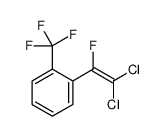 CAS#:88444-77-3
CAS#:88444-77-3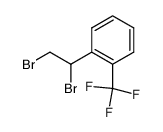 CAS#:79756-82-4
CAS#:79756-82-4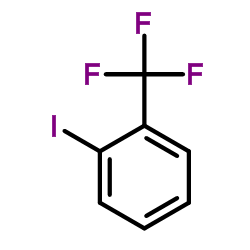 CAS#:444-29-1
CAS#:444-29-1 CAS#:79756-81-3
CAS#:79756-81-3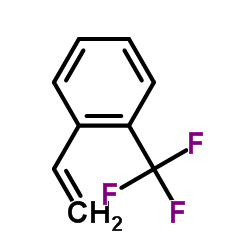 CAS#:395-45-9
CAS#:395-45-9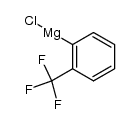 CAS#:3796-19-8
CAS#:3796-19-8 CAS#:392-83-6
CAS#:392-83-6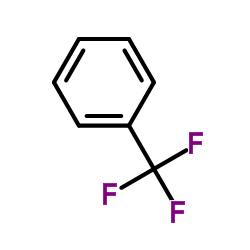 CAS#:98-08-8
CAS#:98-08-8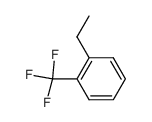 CAS#:74423-01-1
CAS#:74423-01-1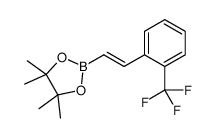 CAS#:1294009-25-8
CAS#:1294009-25-8![1-[2-(Trifluoromethyl)phenyl]ethanone structure](https://image.chemsrc.com/caspic/206/17408-14-9.png) CAS#:17408-14-9
CAS#:17408-14-9![methyl 3-[2-(trifluoromethyl)phenyl]prop-2-ynoate structure](https://image.chemsrc.com/caspic/285/841205-62-7.png) CAS#:841205-62-7
CAS#:841205-62-7